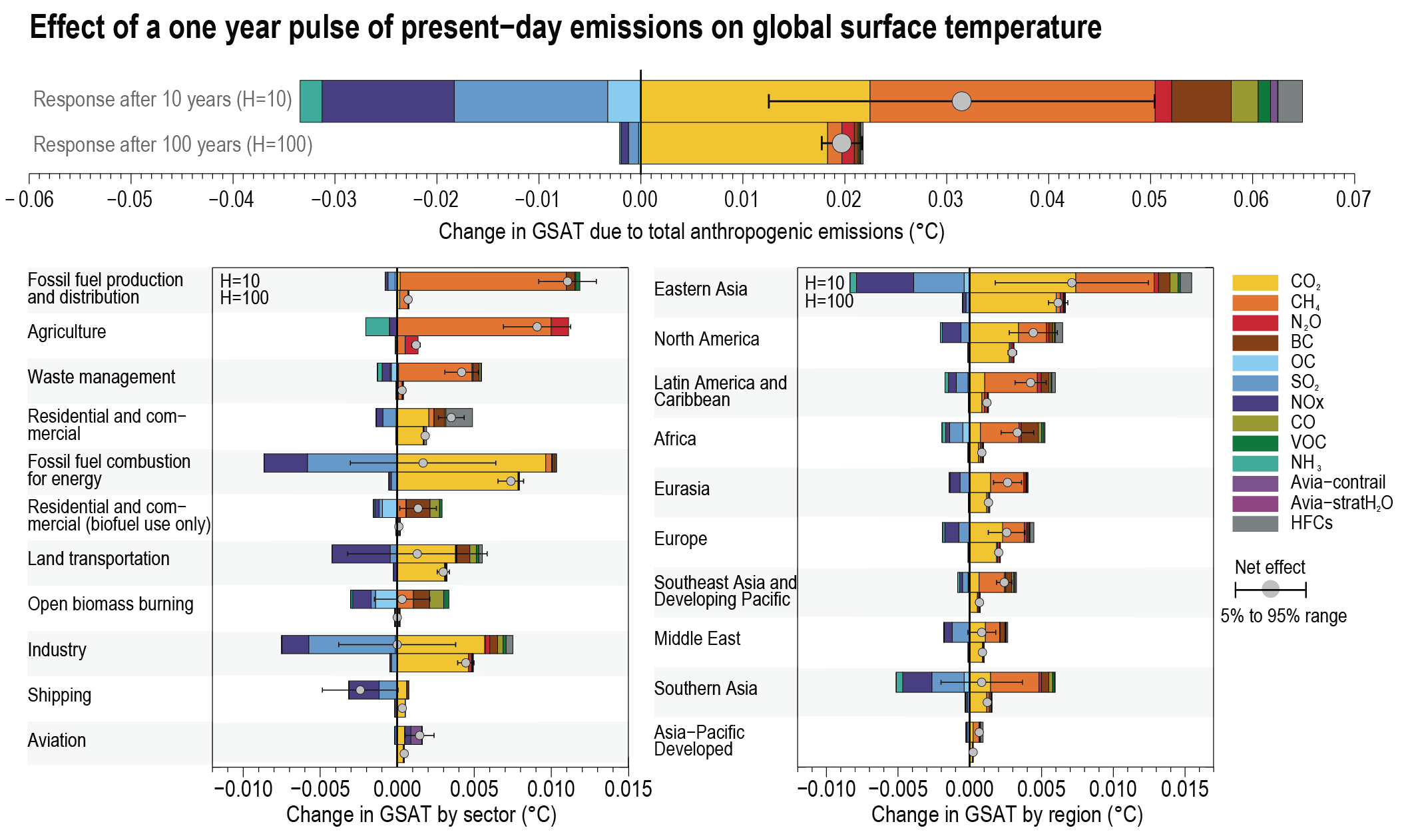Back chapter figures
Figure 6.16
Figure caption
Figure 6.16 | Global mean temperature response 10 and 100 years following one year of present-day (year 2014) emissions. The temperature response is broken down by individual species and shown for total anthropogenic emissions (top), sectoral emissions (left) and regional emissions (right). Sectors and regions are sorted by (high-to-low) net temperature effect on the 10-year time scale. Error bars in the top panel show uncertainty (5–95% interval) in net temperature effect due to uncertainty in radiative forcingonly (calculated using a Monte Carlo approach and best estimate uncertainties from the literature – see Lund et al. (2020) for details). CO2 emissions are excluded from open biomass burning and residential biofuel use due to their unavailability in the Community Emissions Data System (CEDS) and uncertainties around non-sustainable emission fraction. Emissions for 2014 originate from the CEDS (Hoesly et al., 2018), except for HFCs which are from Purohit et al. (2020), open biomass burning from van Marle et al. (2017), and aviation H2O which is from Lee et al. (2021). The split of fossil fuel production and distribution and combustion for energy and residential and commercial fuel use into fossil fuel and biofuel components is obtained from the GAINS model (ECLIPSE version 6b dataset). Open biomass burning emissions are not included for the regions. Emissions are aggregated into fossil fuel production and distribution (coal mining, oil and gas production, upstream gas flaring and gas distribution networks), agriculture (livestock and crop production), fossil fuel combustion for energy (power plants), industry (combustion and production processes, solvent-use losses from production and end use), residential and commercial (fossil fuel use for cooking and heating as well is HFCs leakage from A/C and refrigeration), waste management (solid waste, including landfills and open trash burning, residential and industrial waste water), transport (road and off-road vehicles, and HFC leakage from A/C and refrigeration equipment), residential and commercial (biofuels use for cooking and heating), open biomass burning (forest, grassland, savanna fires and agricultural waste burning), shipping (including international shipping), and aviation (including international aviation). Further details on data sources and processing are available in the chapter data table (Table 6.SM.3).
